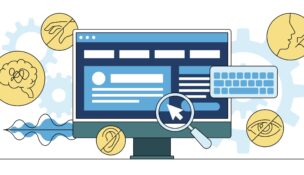Mindfulness: The Answer to Easing Employee Stress
Employers that foster a workplace culture that prioritizes wellbeing can help employees cope
Sandra Crews //July 26, 2018//


Mindfulness: The Answer to Easing Employee Stress
Employers that foster a workplace culture that prioritizes wellbeing can help employees cope
Sandra Crews //July 26, 2018//

A modest amount of stress in the workplace is expected. But sustained levels of intense physical or mental pressure can be harmful and lead to health decline, affecting professional and family relationships and contributing to poor work performance.
According to the Centers for Disease Control and Prevention, nearly “40 percent of workers say that their jobs are very stressful and more than 26 percent say they are ‘often burned out or stressed’ by their work.”
Meanwhile, United Health Foundation’s most recent America’s Health Rankings suggests that Coloradans experience between 3.5 and 3.6 poor mental health days monthly. That’s the number of days an adult reports their overall mental health was depleted and during which they may not be able to fully participate in work or other activities.
Balancing work, family, financial and health concerns may be taxing for many; however, according to a recent UnitedHealthcare survey, almost 90 percent of employees said meditation or mindfulness has a positive impact on a person’s overall health and wellbeing, including 41 percent who believe such activities can have a “significant impact.”
Employers that foster a workplace culture that prioritizes wellbeing, including mindfulness programs, can help employees cope with challenging times, whether at work or at home, that may lower stress, reduce health risks, improve decisions and focus.
ABCs OF MINDFULNESS
“Mindfulness” is a practice of being fully present in each moment with an open and curious attitude. To some, mindfulness is a hard concept to grasp, but the goal can be quite simple. Just imagine a workplace filled with positive energy, where working relationships and communication are optimized and challenging situations and distractions give way to focus and self-awareness. These are some of the goals of mindfulness programs.
With practice, mindfulness may free employees of habitual patterns and may help them perform better.
For example, the following “mindful breaths” exercise may be helpful, especially when noticing that twinge of tightness, anxiety or stress many of us experience during the day:
- Bring awareness to your body and natural breath.
- Inhale through the nose and exhale through the nostrils or the mouth as if breathing through a straw
- Repeat the inhale and exhale. Notice the air entering the body, pause after the in-breath and feel the air leave the body on the out-breath.
- One more time – Slowly inhale; then slowly exhale.
Mindfulness can be practiced while sitting in a quiet place, while walking or even during normal workplace activities, such as attending a meeting or replying to an email. When distractions come to mind, practice this technique to let go and come back to the present moment.
Employees are not the only ones who may benefit from mindfulness programs. Employers may also profit thanks to increased productivity, enhanced sense of connectedness to the company culture and reduced absenteeism, burnout or turnover.
Following a solid body a research from universities and institutions, mindfulness programs are now offered by some health plans, including UnitedHealthcare and medical centers, hospitals, schools and businesses.

























